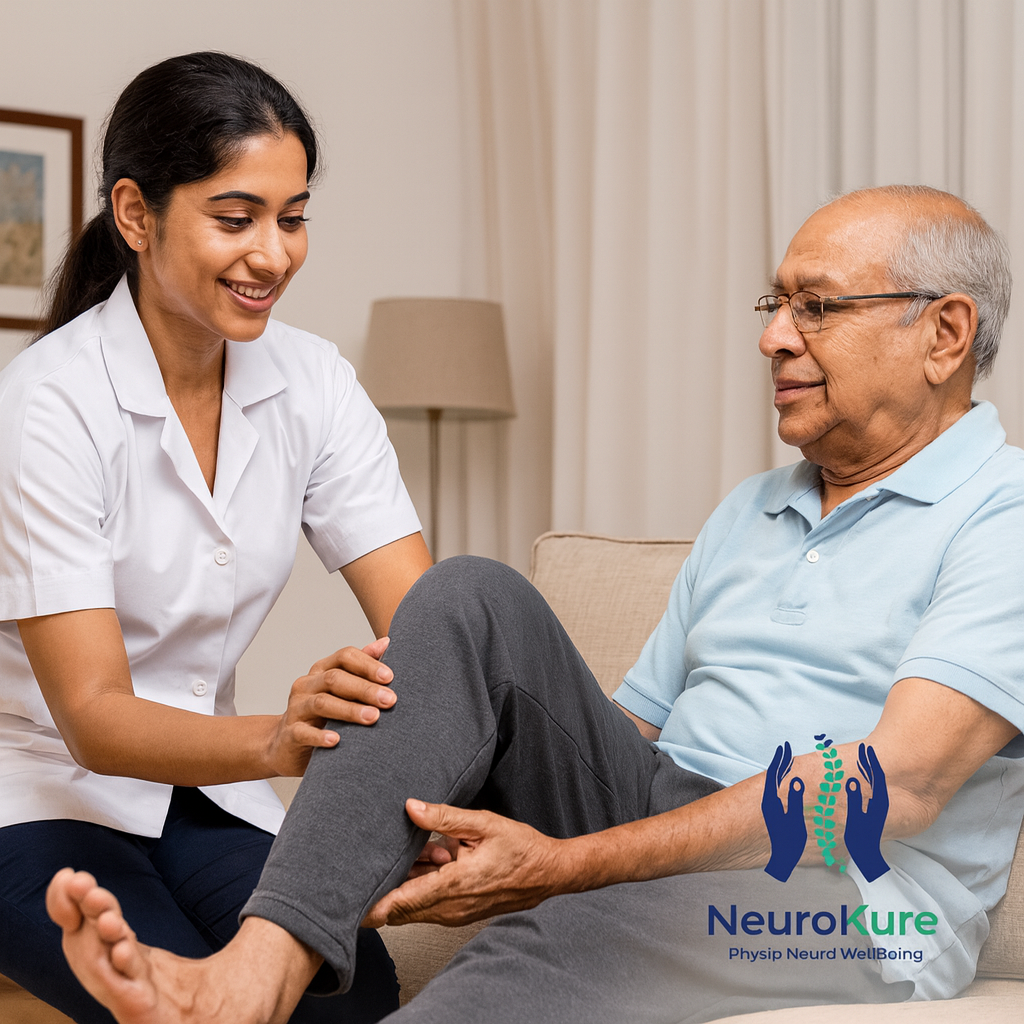Posture Correction Guide: Ergonomic Solutions for Pain-Free Living & Working As a physiotherapist, I often meet people who tell me the same story — “My back aches constantly,” “My neck feels like a rock,” or “There’s this sharp pain between my shoulders that never leaves.” If you spend eight or more hours a day working …
Posture Correction Guide: Ergonomic Solutions for Pain-Free Living & Working
As a physiotherapist, I often meet people who tell me the same story — “My back aches constantly,” “My neck feels like a rock,” or “There’s this sharp pain between my shoulders that never leaves.” If you spend eight or more hours a day working at a desk, you’re not alone. The problem isn’t just your workload — it’s your posture and how your workspace is set up.
Poor posture doesn’t just cause discomfort; it drains your energy, lowers productivity, and builds chronic pain that can last years. The good news is, with the right posture correction therapy and practical ergonomic training, you can reverse this damage — no expensive equipment or drastic lifestyle changes required.
Why Posture Correction Matters More Than You Think
Bad posture isn’t just about appearance or “sitting up straight.” It’s a health concern that affects nearly every system in your body. Long-term slouching or hunching can lead to:
- Chronic neck and back pain
- Frequent headaches and migraines
- Reduced lung capacity and shallow breathing
- Digestive issues caused by compression
- Progressive spinal misalignment and nerve strain
The average person sits for nearly 9 hours a day — longer than they sleep. If your workspace setup is wrong, that’s hours of daily strain on your muscles and joints. The right ergonomic assessment helps you align your workspace to your body, not the other way around.
The Foundation: Understanding Ergonomic Training
Ergonomic training is about designing your environment to fit your body’s natural alignment. Imagine wearing shoes two sizes too small and trying to run — that’s what happens when your workstation forces your body into awkward positions all day.
An ergonomic assessment typically includes reviewing:
- Monitor height and distance
- Chair height and lumbar support
- Keyboard and mouse placement
- Lighting and screen glare
- Work–break intervals and movement habits
By fixing these small details, posture correction becomes sustainable — not something you have to think about all the time.
Your Posture Improvement Program: 5 Essential Adjustments
Better posture doesn’t require perfection. It requires awareness and consistency. Here are five simple but powerful changes that form the foundation of any posture improvement program:
1. Screen at Eye Level
Your monitor should be about an arm’s length away, with the top edge at or slightly below eye level. Looking down all day adds up to 60 pounds of pressure on your neck and upper spine.
2. The 90–90–90 Rule
Maintain 90° angles at your elbows, hips, and knees. This distributes body weight evenly and reduces unnecessary tension in your back and shoulders.
3. Support Your Lower Back
Use a chair that supports the natural curve of your lower spine. No lumbar support? Roll up a small towel and place it behind your lower back — it’s simple and effective.
4. Feet Flat, Shoulders Relaxed
Keep your feet flat on the floor (or on a footrest). Relax your shoulders naturally instead of raising them toward your ears. Small changes here prevent long-term tension headaches.
5. The 20–20–20 Rule
Every 20 minutes, look at something 20 feet away for 20 seconds. Every hour, stand and move for at least 2 minutes. These micro-breaks improve circulation and prevent muscle fatigue.
When to Seek Posture Physiotherapy
Sometimes, even the best ergonomic setup can’t undo months or years of poor posture. That’s when professional help makes a difference. Consider visiting NeuroKure Wellbeing Centre for posture physiotherapy if you experience:
- Pain that doesn’t improve despite ergonomic adjustments
- Numbness or tingling in your arms or legs
- Frequent tension headaches
- Reduced flexibility or range of motion
- Discomfort that interferes with sleep
A trained physiotherapist identifies muscle imbalances, teaches you corrective exercises, and builds a structured posture improvement program that suits your body and daily routine.
Building Better Habits Beyond the Workspace
Posture correction doesn’t stop when you leave the desk. The habits you build throughout the day keep your body aligned and resilient.
- Strengthen your core: Strong abs and back muscles stabilize your spine. Just 10 minutes of focused core work daily can transform your posture.
- Stretch regularly: Tight hip flexors and hamstrings are the silent enemies of good posture. Stretch them to relieve tension in the lower back.
- Stay active: Movement keeps joints lubricated and reduces stiffness. Even short walks during breaks make a difference.
The Bottom Line
You wouldn’t ignore a check-engine light in your car — so why ignore your body’s pain signals? Posture correction therapy and workplace ergonomics aren’t luxuries; they’re essential for long-term health and productivity. The tension and fatigue you feel right now don’t have to be permanent.
At NeuroKure Wellbeing Centre, we provide professional ergonomic assessments and posture rehabilitation programs that help you move, sit, and live pain-free. Start today — your spine will thank you.






